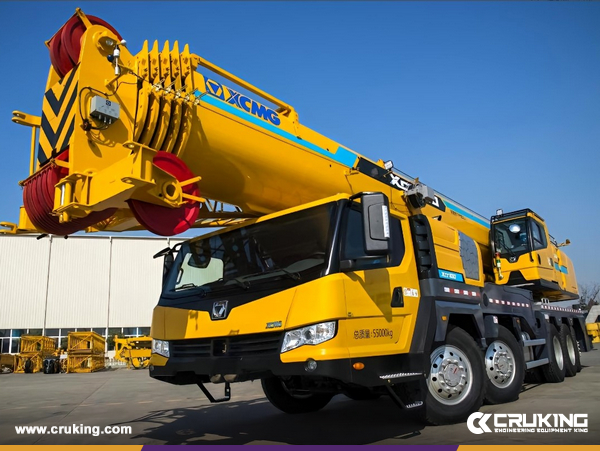On construction sites, cranes, as indispensable large-scale equipment, are providing strong support for all kinds of construction projects with their unique functions and advantages. From tower cranes to truck-mounted, tire-mounted, and then crawler cranes, they each play a key role in different fields, and jointly promote the progress and development of the construction industry.
Tower cranes have become the first choice for high-rise and super-high-rise building construction with their towering stature and versatile adaptability. Its diversified models (such as mobile, fixed, attached, etc.) can meet the needs of different construction scenarios, and can easily reach a height of more than 100 meters after attachment, with the effective operating range covering 80% of the entire range. Even when carrying heavy loads, the tower crane can travel freely to the designated position, realizing an efficient and flexible construction mode. At the same time, the electric motor as a power source not only operates reliably, but also greatly reduces operating and maintenance costs. However, tower cranes also face the challenges of large size, cumbersome disassembly and installation, and high safety requirements for working at height.

In contrast, with its flexibility and mobility, the truck-mounted crane is popular among the more mobile construction units or temporarily dispersed construction sites. Relying on the car chassis, it can be quickly transferred to different construction sites to meet the demand for rapid response. The piezo-hydraulic drive system ensures a smooth and efficient lifting process, while the folding lifting arm further enhances working flexibility. However, the need to use outriggers when lifting heavy loads and the limited off-road performance are challenges that truck-mounted cranes need to overcome.

Tyre cranes find a balance between stability and flexibility. They have moderate traveling speeds and good off-road performance, with an uphill capability of 17% to 20%. On flat ground, tire cranes can work on all sides without outriggers, and can even walk slowly with heavy loads, which greatly improves construction efficiency. At the same time, its stability also ensures safety during operation. However, for long-distance movement and high road surface requirements, tire cranes may not be the best choice.

Crawler cranes, on the other hand, are known for their excellent off-road capabilities and versatility. It can work smoothly on soft ground such as mud and swamps, and travel effortlessly with lifting weights. At the same time, by changing a variety of working devices, crawler cranes can also carry out a variety of operations, and the scope of use is extremely wide. However, in the process of travelling on the road is more destructive, and long-distance transfer needs to rely on flatbed trailers for loading and transporting, is the problem it needs to face.

In summary, all types of cranes in the construction industry have their style and complement each other. They provide strong support for all kinds of construction projects with their unique advantages and functions. In future development, with the continuous progress and innovation of technology, I believe that these lifting giants will continue to play a more important role, contributing more power to the prosperity of the construction industry.
2021-06-27
2021-09-30
2021-01-13
2021-01-14
2021-12-31
2021-08-10
2021-12-14
2021-01-15